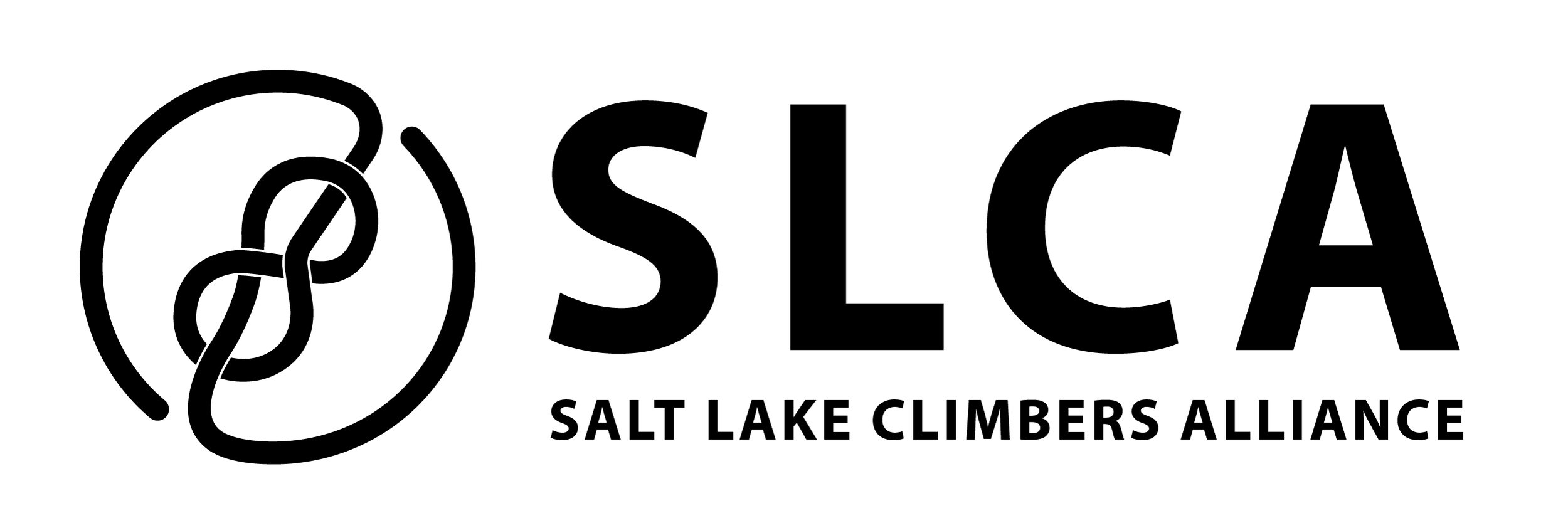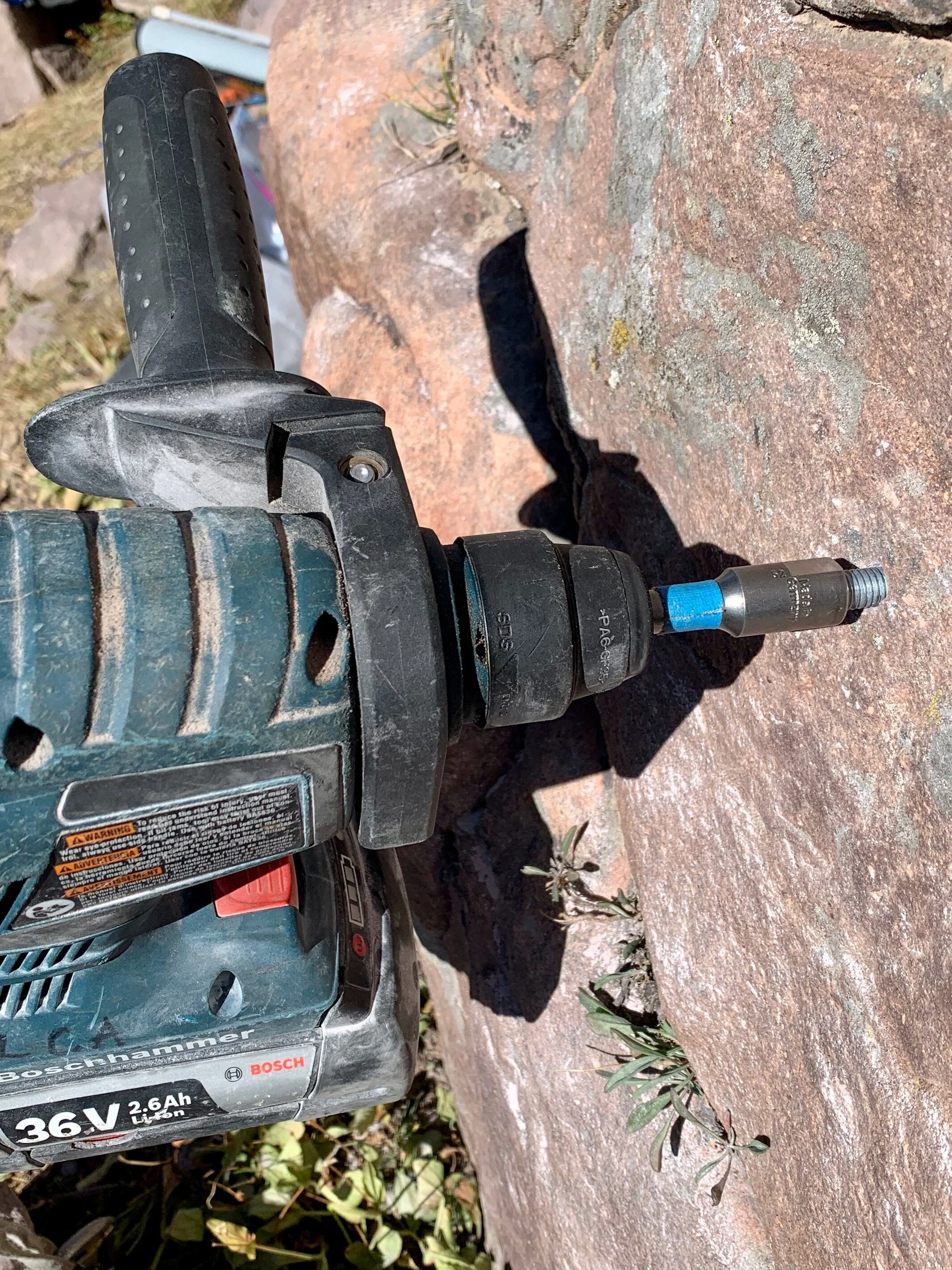A SUMMARY: SLCA’s Pro Anchor Replacement Pilot Project
A SUMMARY: SLCA’s Pro Anchor Replacement Pilot Project
December, 2020
Since 2014, the Salt Lake Climbers Alliance has supported a volunteer committee of local climbers, Wasatch first ascensionists and route developers in their efforts to identify and replace unreliable climbing anchors in the Wasatch. Comprised of seasoned veterans and young guns, the Wasatch Anchor Replacement Initiative (WARI) committee brainstormed best practices for route development and anchor removal and replacement. Given the strong traditional culture in Little Cottonwood Canyon, the committee- many of whom are mechanical engineers with access to local gear manufacturers’ shops- developed a variety of custom tools and methods to carefully disassemble and remove existing fixed anchors, and to replace them with new and reliable stainless steel anchors. Since 2014, the WARI committee has replaced thousands of bolts in the Wasatch and surrounding areas, but on a limited and volunteer basis.
As with many of the impressive trail work projects that were completed at the same time, eventually the SLCA began to consider the need to train and hire a dedicated crew to pursue this work, full-time. In several locations- like the Gate Buttress and Hellgate Cliffs in Little Cottonwood- the SLCA has entered into specific agreements with the land managers, including responsibility for trail work, as well as managing and replacing the climbing anchors. As hired employees, anchor replacement technicians would be trained in the use of qualified industrial rope descent systems to minimize the risks and better position for work. They would also adopt standardized methods and quality assurance processes on all anchor installations to ensure reliable, long-term anchor management. As paid employees, they would be able to schedule work around peak climbing times and venues, and also be insured for the on-the-job hazards, and trained accordingly.
This fall (2020) the SLCA hired a small crew of experienced workers to put this idea to the test on the managed properties at Gate Buttress and the Main Hellgate. Three anchor replacement technicians (and a Coordinator) were hired and trained alongside the WARI committee in the use of sport and industrial fall protection systems and anchor removal and installation methods. Armed with extensive tool kits developed and crafted by the WARI committee, the pilot crew spent three weeks performing anchor replacement on a variety of terrain in Little Cottonwood Canyon- from single-pitch granite friction test pieces to five-pitch limestone adventure routes. Input was sought from first ascenionsts and community consensus, and routes that had yet to be updated in earlier efforts, or that the FA and community had identified as suitable for replacement and would be improved by the effort, were updated.
Efforts in the Gate Buttress / Plumb Line gully area replaced aging anchors - like a quarter-inch rivet that is used for a key pendulum- that were limiting access to otherwise attractive routes, and added anchors- with the endorsement of the community- to reduce the need for shared top anchors. Other efforts at Gate Buttress addressed some older test-pieces with questionable bolts (as many parties on Mountain Project had reported), and replaced some very ‘classic’ LCC friction slab terrain with reliable anchors for lead and top-rope climbing.
Efforts at Hellgate (in agreement with Snowbird) were focused on the Main Wall. With the endorsement of the first ascensionist, a five pitch ‘adventure’ route that sported an eclectic mix of hardware installed over multiple efforts- was replaced with new, reliable stainless steel anchors. Random loose rocks and poorly protected sections were also addressed. While Hellgate is ‘sub-alpine’ and always has a risk of loose rock, the resulting and improved route presents an additional attractive multi-pitch option for the increased summer climber traffic.
Over the course of 15 field days (including training)- and while working on redundant industrial rope systems- the pilot crew installed 103 anchors (84 adhesive anchors and 19 sleeve anchors- only 6 of which were ‘new’ placements.) They used 9.5 tubes of (application specific) adhesive and spent 104 hours (90 percent of their time on the clock!) ‘on-rope’ or using fall protection systems to position for work. The crew generated daily estimates on systems, time and materials to get a handle on what this kind of paid work costs, and what it takes to get done correctly, every time. Along the way, the crew refined work processes and strategies for single-pitch routes, as well as bigger multi-pitch terrain. This work is not without hazard or challenges though, and one worker described it as ‘the most interesting job he’s ever had’ after hauling tool kits and equipment up 5 pitches, before even starting in on the anchor replacement.
Armed with this knowledge and updated materials, in November the pilot crew headed towards a final fall project- and yet another type of terrain and climbing- in Maple Canyon’s severely overhanging Pipe Dream cave. The area was in imminent need of anchor replacement- as the nature of climbing there requires regularly falling on anchors that were installed decades ago and now show serious signs of wear. We used industrial aid climbing systems and low-temperature adhesive to get the work done in the colder months, when no one was climbing. 250 bolts were replaced, with a crew of 3-4 technicians, and over ~3 full weeks.
Most importantly, this is a popular venue that the local Forest Service agrees is in need of work before it becomes a problem, and is willing to endorse anchor replacement work by a paid SLCA crew. The world-class terrain in the Pipe Dream got the updated and reliable anchors it deserves- and the SLCA opened the door to a model of professional, community-based and climber-managed anchor replacement that treats our popular climbing venues as the prized and shared public recreation resources that they have become. Read a full summary of the Pipe Dream Project here.












